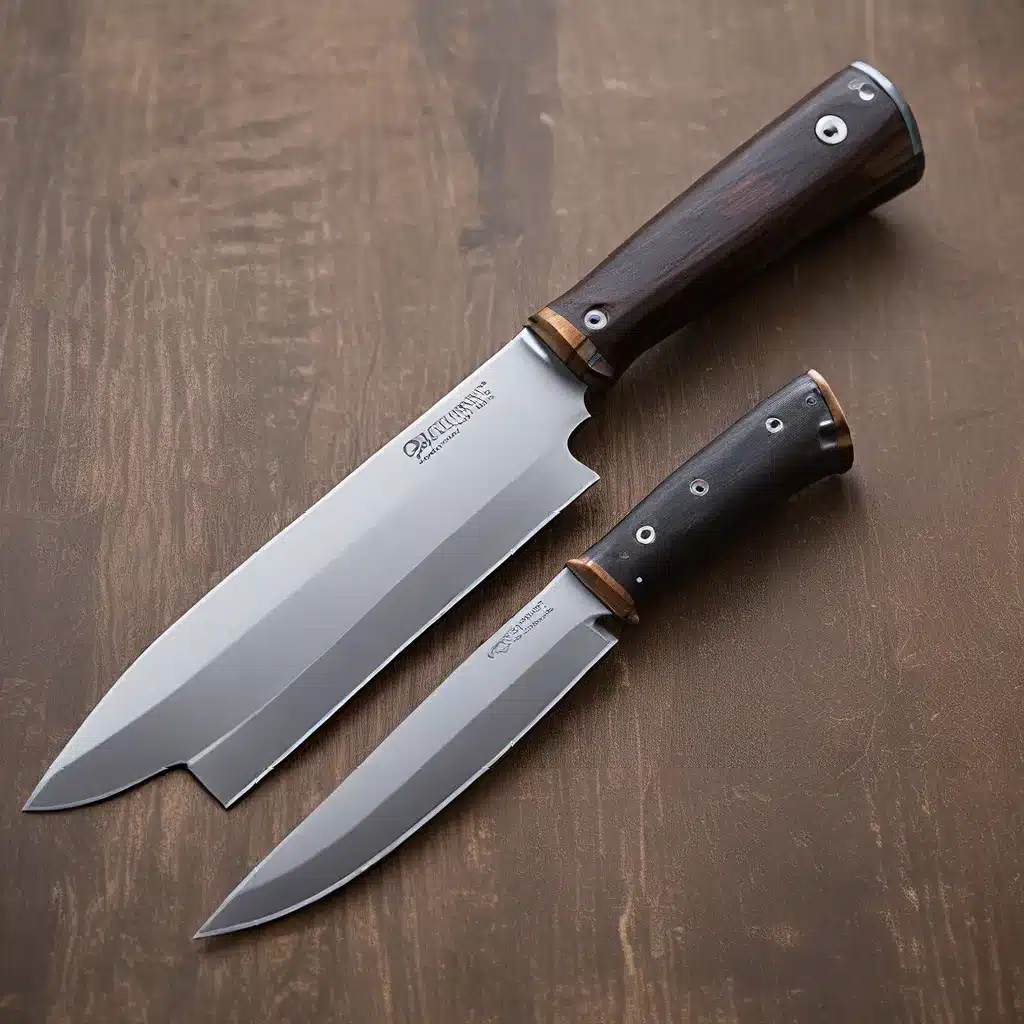
Ah, the humble knife – a trusty companion in the kitchen, the workshop, and beyond. Whether you’re slicing through succulent steaks, carving intricate wood designs, or even fending off a zombie apocalypse (hey, you never know!), your knives are an extension of your own hands. But like any loyal friend, they require a little TLC to keep them in top shape.
Proper knife care and maintenance is the key to ensuring your blades stay sharp, safe, and ready for action. And trust me, I know a thing or two about this. As a self-proclaimed knife enthusiast, I’ve put my fair share of blades through the wringer. From carbon steel masterpieces to sleek stainless steel workhorses, I’ve learned the ins and outs of keeping them in pristine condition.
So, let’s dive in and uncover the secrets to extending the life of your beloved knives, shall we?
Washing and Drying: The Dynamic Duo
The first and most crucial step in knife care is keeping those blades clean and dry. It may seem simple, but improper washing and drying is a surefire way to send your knives into an early retirement.
Rule #1: Never, ever put your knives in the dishwasher. The harsh environment of a dishwasher can do a real number on your blades, causing them to become dull, discolored, and even pitted over time. Instead, stick to good old-fashioned hand washing with warm, soapy water.
As the experts at Town Cutler advise, avoid using abrasive sponges or scrubbers, as these can scratch the surface of your knives. Stick to a soft, gentle touch and make sure to rinse thoroughly.
Now, the drying part is just as crucial. Never leave your knives to air dry or soak in water. This can lead to unsightly rust and corrosion, even on stainless steel blades. Instead, use an absorbent towel, like a paper towel, to gently pat your knives dry.
Caring for Carbon Steel Knives
While stainless steel knives are relatively low-maintenance, carbon steel blades require a bit more TLC. These knives are known for their exceptional sharpness and edge retention, but they’re also more reactive to acids and moisture.
As the team at Town Cutler suggests, it’s crucial to rinse and wipe down your carbon steel knives after cutting any acidic foods, like citrus, tomatoes, or onions. The acid can start to corrode the steel, so a quick wash and dry is essential.
But the real secret to keeping your carbon steel knives in tip-top shape is oil. After washing and drying, apply a thin layer of a food-safe oil, like camellia oil, to the blade. This creates a protective barrier and helps encourage a beautiful, even patina over time.
Pro tip: To oil the edge of the blade, apply a small amount of oil to a thick towel and gently run it along the edge. This helps keep your knife sharper for longer, but be sure to avoid touching the edge directly with your fingers.
Sharpening and Honing: The Dynamic Duo
No matter how well you care for your knives, they’re going to need some sharpening love from time to time. But before you go reaching for that electric sharpener, let me stop you right there.
According to the experts at Town Cutler, machine sharpening is often too aggressive and can actually do more harm than good. Instead, stick to manual sharpening with a whetstone or, even better, a professional sharpening service.
Aim to have your knives professionally sharpened at least once a year, even if you’re maintaining them at home. And in between those professional tune-ups, you can use a honing rod to help keep your edges true and razor-sharp.
Honing rods don’t actually sharpen the blade; instead, they remove microscopic bits of steel to keep the edge aligned and ready for action. Just a few gentle strokes before each use can make a world of difference.
Storing Your Knives: Protect and Preserve
Now that your knives are clean, oiled, and sharp, it’s time to think about storage. Proper storage is key to keeping your blades in pristine condition and preventing accidental nicks or cuts.
The folks at Town Cutler recommend using a magnetic knife strip or storing your knives in a protective sheath or roll. This keeps them organized, accessible, and safe from harm.
Avoid just tossing your knives in a drawer, as this can lead to dings, scratches, and potential injury. And whatever you do, steer clear of the dreaded knife block. These can trap moisture and cause your blades to rust or corrode over time.
Remember, your knives are an investment, so treat them with the care and respect they deserve. With a little bit of diligence and know-how, you can keep those trusty blades slicing and dicing for years to come.
Bringing It All Together
Maintaining your knives may seem like a hassle, but trust me, it’s worth the effort. By following these simple steps, you’ll not only extend the life of your blades but also ensure they’re always ready for action, whether you’re whipping up a gourmet meal or tackling that next big DIY project.
So, what are you waiting for? Grab your knives, grab a towel, and let’s get to work! Your blades will thank you, and who knows, you might even impress your friends with your newfound knife care expertise.
And remember, if you ever need a little extra help or want to explore the world of premium, handmade knives, be sure to check out Herman Knives. These folks know a thing or two about crafting top-notch blades that will last a lifetime.
Happy sharpening, my friends!


